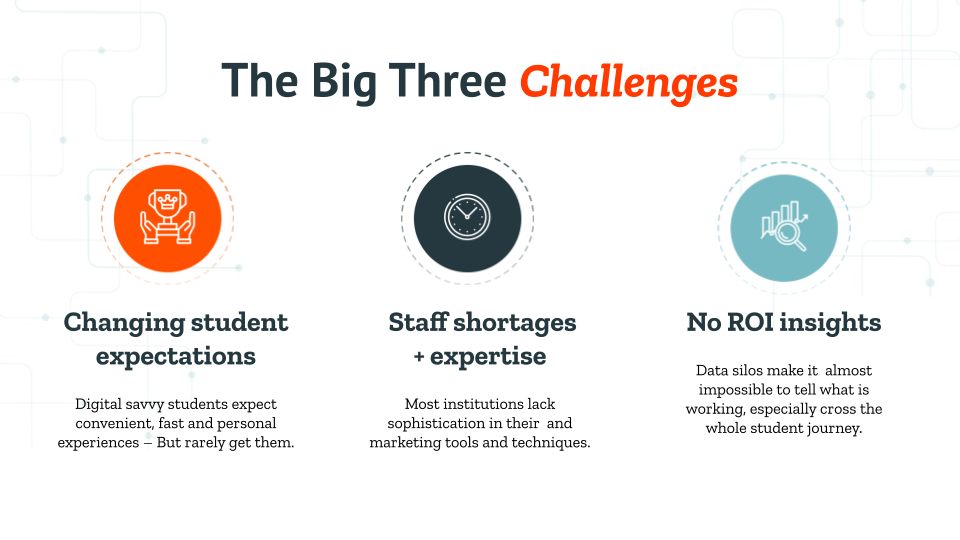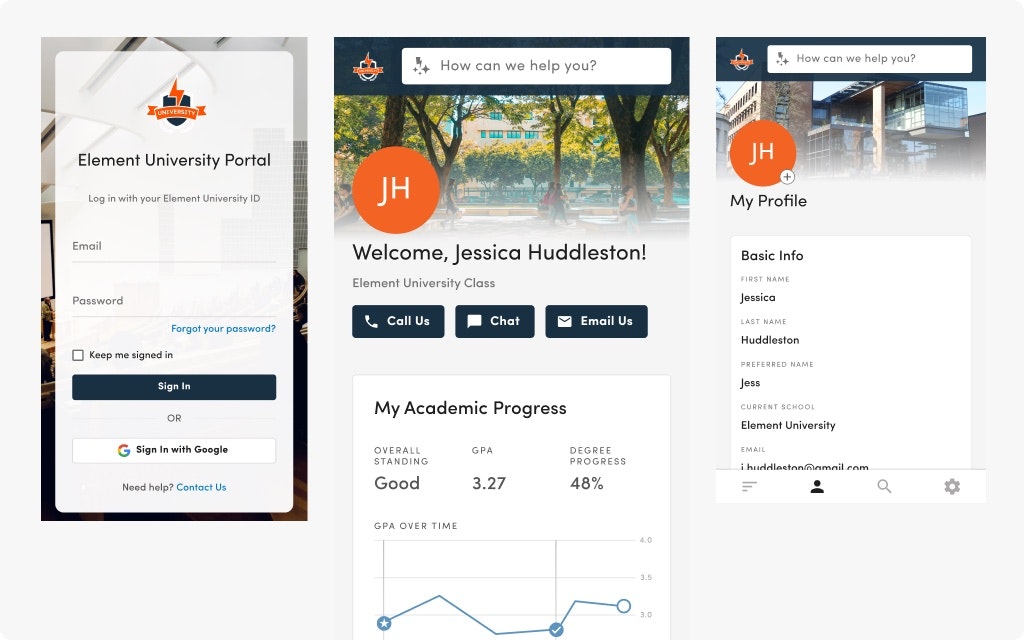Student Expectations Are Changing: How Do We Meet Them?
by Sirley Carballo · Updated Sep 13, 2024

How to Meet Changing Student Expectations
Today’s students have higher expectations when it comes to their educational experience. They no longer see themselves as passive recipients of information but as active participants in their own learning journey.
Their desire for a more unified and personalized experience presents a major challenge for those working in higher education. Today's learners expect convenient and fast interactions with educational institutions every single time.

What Today's Students Expect
Gone are the days when students were satisfied with a one-size-fits-all approach to education. They now expect institutions to cater to their unique needs and preferences. This shift in expectations is influenced by advancements in technology, which have made it possible to gather and analyze vast amounts of data to understand student behavior and preferences.
To meet these changing expectations, educational institutions must focus on making every touchpoint with students impactful. This includes providing seamless online experiences, personalized communication, and easily accessible resources. Institutions should strive to create an environment where students feel seen, heard, and valued throughout their entire educational journey.
Exceeding expectations is crucial not only for student recruitment and engagement but also for building long-lasting relationships. Institutions that are able to effectively meet and exceed these expectations will likely see higher rates of student satisfaction, retention, and success.
However, it's important to note that meeting these expectations can be challenging. Staff shortages, lack of expertise, and limited resources are common obstacles.
Nevertheless, these challenges can be turned into opportunities to rethink team building and provide the right tools and training. The true value of a team lies in investing in their growth, empowering them with technology, and nurturing their potential.
Students are looking for more than just a degree; they want an experience that prepares them for the future. By understanding and addressing the changing expectations of students, educational institutions can create a transformative and fulfilling educational experience that sets students up for success in their personal and professional lives.
Little Things Make the Biggest Differences
Students' expectations can be met by focusing on the power of little things. Based on strategies shared by Stan Phelps at the 2023 Engage Summit, let's explore how educational institutions can meet these changing expectations through small yet impactful measures.
Raising the Bar on Responsiveness
Students expect quick and convenient interactions with educational institutions. By leveraging technology, institutions can streamline their response times to inquiries, concerns, and feedback.
For example, Element451 enables universities like Villa Maria College to automatically schedule visits after receiving inquiry forms, reducing response time and enhancing the quality of engagement.
Personalizing the Experience
Today's students desire a more unified and personalized educational experience. Educational institutions can achieve this by gathering and utilizing student data to tailor their offerings and support systems.
Florida State College in Jacksonville successfully employs Element451 to track student progress and provide personalized support services. This proactive approach enhances student success and satisfaction.

See How Element451 Works
With its powerful and customizable platform, Element451 can provide an unparalleled level of support to institutions seeking to engage with their students in a more effective and dynamic way.
See It In Action
Embracing Convenience and Technology
To meet their changing expectations, educational institutions must harness the power of technology to enhance convenience for students.
Amazon is a prime example and prioritizes customer-centricity by providing immediate assistance through the May Day button on its Fire tablets.
Similarly, Tesco's implementation of "click and collect" with geo-fencing technology simplifies grocery pick-up and saves time for busy students.
Removing Friction through Streamlined Processes
Educational institutions can adapt to changing student expectations by focusing on optimizing processes to remove unnecessary friction. Wells Fargo's mortgage application app tracker is a prime example of how technology can enhance transparency and reduce wait times.
Such innovations empower students with visibility into their educational journey, giving them confidence and peace of mind.
Embedding Customer-centricity in Institutional DNA
Meeting changing student expectations requires a cultural shift within educational institutions. The speaker's emphasis on the importance of an organization's intent and ability to carry it out is paramount.
By prioritizing student-centricity and aligning all aspects of the institution towards that goal, educational institutions are better positioned to provide the desired experience.
Addressing the Ever-Changing Needs of Students
Higher education institutions must embrace the power of little things. By focusing on responsiveness, personalization, convenience, and removing friction, institutions can create an educational experience that exceeds expectations.
Embedding a culture of lagniappe and customer-centricity ensures that all interactions with students are driven by warmth and competence. It is through these small yet impactful actions that institutions can transform the student experience and create long-lasting loyalty.
Schedule a call and see how Element451 can help you stay ahead of the evolving needs of your students.

About Element451
Boost enrollment, improve engagement, and support students with an AI workforce built for higher ed. Element451 makes personalization scalable and success repeatable.
Categories
New Blog Posts

The Definitive Guide
AI in Higher Education
Bridge the gap between the latest tech advancements and your institution's success.
Useful Links
Related Articles

Talk With Us
Element451 is the only AI Workforce Platform for higher education. Our friendly experts are here to help you explore how Element451 can improve outcomes for your school.
Get a Demo








